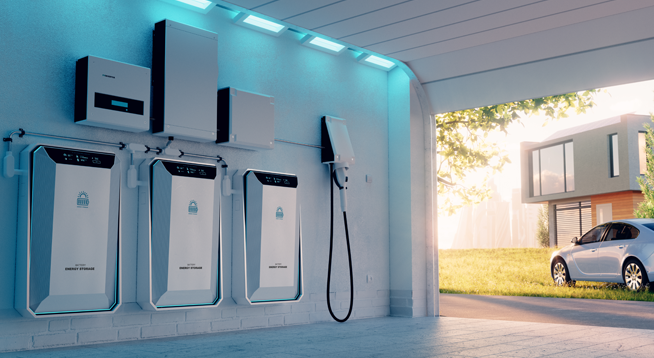The Inside Outside Guys: Housing of the Future?
These large geodesic domes would allow for the polluted air of large cities to be exhausted from the surrounding dome such that inhabitants could always breathe clean, conditioned, air.
Even the great Walt Disney bought into the concept with his proposed Environmental Prototype City of Tomorrow, EPCOT, at Disney World. His vision was an enclosed and monitored city, with citizens screened according to his ideals, which would set the stage for how the world should move ahead.
Walt passed before he could bring this vision to life, but the iconic Spaceship Earth dome still represents the continued hope for a better tomorrow.
One of the big advantages of domes is what we call the “surface-to-volume ratio.” Energy efficiency demands we enclose maximum cubic footage with minimum exterior wall surface. Domes accomplish this.
Compare two conventional “cube” homes like those we build today of 1,600 square feet each and both with uniform 8-foot ceilings.
One home is a 40-foot square, while the other is a 20-by-80-foot rectangle. While both enclose the same footage, the square has 160 lineal feet of exterior wall compared to 200 lineal feet of exterior wall for the rectangle. The rectangle will cost more to build, use more materials, have more exterior wall penetrations from windows, and will use interior space less effectively than the square.
Spherical buildings take this advantage even further and geodesic dome proponents took this thinking to the next step by observing that air is more efficiently moved inside a sphere than it is inside a cube so conditioning the air could be accomplished with less effort.
These domes could help to alleviate the housing crisis in some nations since they can be designed as DIY enclosures or be constructed by large “3-D” printers, additive manufacturing machines, using air injected concrete.
It is said there are more than 300,000 domes throughout the world today, including the Jeddiah Super Dome in Saudi Arabia with a 690 foot base and a baseball stadium in Fukouka, Japan, at more than 700 feet in diameter.
Domes are inherently strong structures that resist high winds extremely well.
Disadvantages might include high cost of specialized labor, windows custom made to fit dome panels, lineal footage of seams on exterior surface, interior sound transmission issues and partitioning.
Additionally, as a real estate investment, one must realize the market is small for someone wanting a dome-shaped home here in the US.
Regardless of the shape of your home, you should never leave major maintenance or modification decisions to anyone but the professionals.
Like those you will find at InsideOutsideGuys.com. For housing advice and more, listen to the Inside Outside Guys every Saturday and Sunday on 760 WJR, from 10 a.m. to noon or contact us at InsideOutsideGuys.com.
